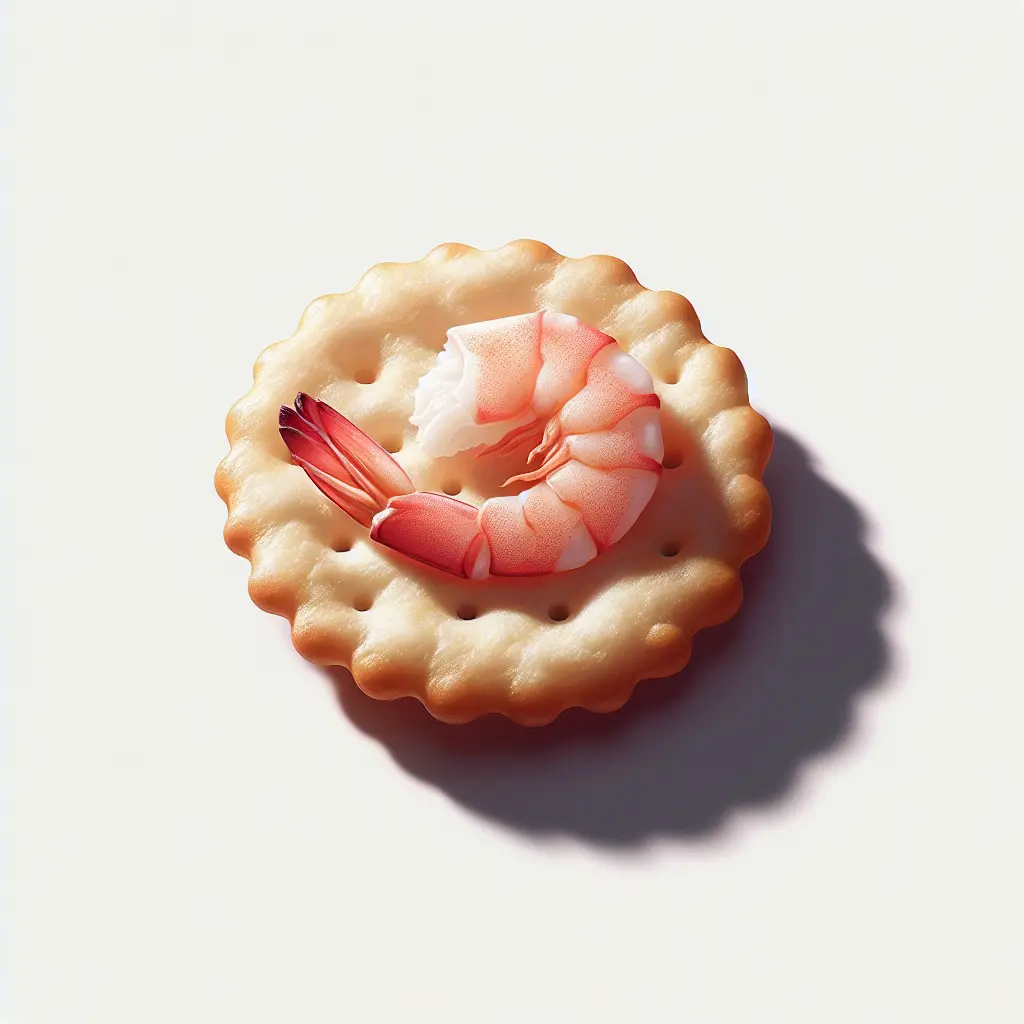Prawn Crackers: A Culinary Delight with Rich History and Varied Forms
Prawn crackers, also known as shrimp chips or krupuk udang in Indonesian, are crispy, bite-sized snacks that have captivated taste buds for centuries. Their origins can be traced back to ancient maritime trading routes, where they were exchanged among Southeast Asian and Chinese merchants. Today, prawn crackers remain a staple in various cuisines around the world, offering a delightful crunch and a savory burst of flavor.
History and Cultural Significance
The exact origins of prawn crackers are shrouded in mystery, but their history is deeply intertwined with the maritime trade networks of Southeast Asia. It is believed that the concept of creating prawn crackers emerged from the need to preserve seafood during long sea voyages. Fishermen and traders would dry and grind shrimp or prawns into a paste, which was then mixed with flour or tapioca starch to form a dough. This dough was then shaped and deep-fried, resulting in the crispy and airy prawn crackers we know today.
Prawn crackers have become an integral part of many Southeast Asian cultures. In Indonesia, they are often served as an accompaniment to traditional dishes such as nasi goreng (fried rice) and gado-gado (vegetable salad with peanut sauce). In Thailand, they are a popular street food snack and are often enjoyed with spicy dipping sauces. Prawn crackers have also gained popularity in Western countries, where they are often served as appetizers or snacks with dips or spreads.
Varieties and Flavors
The diversity of prawn crackers is as vast as the regions they originate from. Each country or region has its unique take on this beloved snack, resulting in a wide array of flavors and textures.
- Indonesia: Indonesian prawn crackers are typically made with a combination of tapioca starch and shrimp paste. They come in various shapes and sizes, ranging from small, round discs to large, rectangular sheets. Indonesian prawn crackers are known for their intense shrimp flavor and crispy texture.
- Thailand: Thai prawn crackers are often made with rice flour and have a slightly sweeter taste compared to their Indonesian counterparts. They are typically shaped into small, round discs and have a delicate, airy texture.
- Malaysia: Malaysian prawn crackers are similar to Indonesian prawn crackers but often have a spicier flavor. They are often made with a blend of shrimp paste, tapioca starch, and chili peppers.
- Vietnam: Vietnamese prawn crackers are unique in their use of green bean flour. They have a slightly chewy texture and a mild shrimp flavor.
- China: Chinese prawn crackers are typically made with wheat flour and имеют a more savory flavor than other varieties. They are often shaped into long, thin sticks and have a crispy, crunchy texture.
Conclusion
Prawn crackers, with their captivating crunch and savory flavors, have become a beloved snack enjoyed worldwide. Their rich history and diverse variations reflect the cultural exchange and culinary creativity that have shaped Southeast Asian cuisine. From the bustling streets of Jakarta to the vibrant markets of Bangkok, prawn crackers continue to tantalize taste buds and bring joy to food lovers of all ages.
How many calories are in Prawn Cracker?
Each 1 oz of Prawn Cracker contains 121 calories.
Prawn Cracker Nutritional Information
| Nutrient | Amount per 1 oz (28g) |
|---|---|
| Calories | 121 Calories |
| Protein | 2g |
| Fat | 5.1g |
| Saturated Fat | 1.5g |
| Cholesterol | 0.0006mg |
| Carbohydrates | 17g |
| Dietary Fiber | 1.6g |
| Sugar | 6.1g |
| Sodium | 0.162mg |
| Potassium | 0.0547mg |
| Calcium | 0.0057mg |
| Iron | 0.0005mg |
